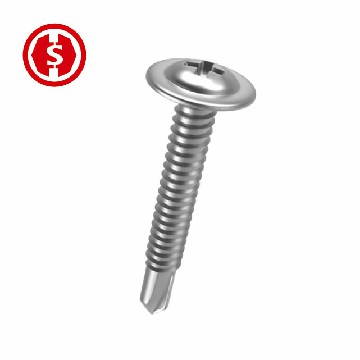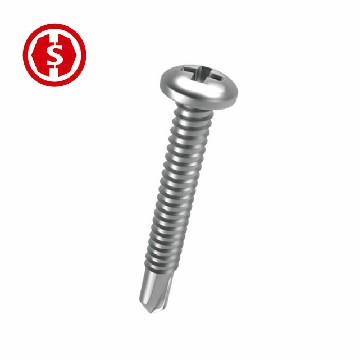

Stainless steel screws are primarily made from iron, chromium, and varying amounts of other elements such as nickel, molybdenum, or titanium. The specific combination of these elements determines the grade and properties of the stainless steel. Common grades include 304, 316, and 18-8 stainless steel, each with its own corrosion resistance and strength characteristics.
Stainless steel screws offer numerous advantages over other types of fasteners. Some key benefits include:
Corrosion Resistance: Stainless steel screws excel in resisting corrosion, making them suitable for outdoor, marine, and high-humidity applications.
Strength and Durability: The alloy composition of stainless steel grants exceptional strength and durability, ensuring long-lasting performance.
Aesthetic Appeal: Stainless steel screws have an attractive appearance that complements various projects, including furniture, appliances, and decorative fixtures.
Low Maintenance: Thanks to their corrosion resistance, stainless steel screws require minimal maintenance, saving you time and effort.
Versatility: With a wide range of sizes, thread types, and head styles available, stainless steel screws can accommodate diverse project requirements.

There are several types of stainless steel screws, each designed for specific applications and preferences. Here are four commonly used types:
Flat head screws have a countersunk head that sits flush with the surface when fully driven. They are ideal for applications where a flush appearance is desired, such as furniture assembly or woodworking projects.
Pan head screws feature a slightly rounded, protruding head with a flat bottom. They are versatile and suitable for a wide range of applications, including general construction, metalwork, and electrical installations.
Round head screws have a domed head with a flat bearing surface. They provide a decorative look while offering sufficient clamping force, making them suitable for applications where aesthetics and strength are both important.
Socket head screws have a cylindrical head with an internal hexagonal recess (socket). They require a hex key or Allen wrench for installation and are commonly used in machinery, automotive, and engineering applications where high torque is necessary.

To ensure optimal performance, it's crucial to choose the right stainless steel screws for your project. Consider the following factors:
Select screws that match the material thickness and desired grip length. Using excessively long screws can compromise structural integrity, while short screws may not provide sufficient grip.
Choose a drive type that suits your tools and preferences. Common drive types include Phillips, slotted, Torx, and hex.
Different thread types, such as coarse or fine threads, are suitable for specific materials and applications. Coarse threads are typically used in wood, while fine threads are more common in metal or plastic.
Consider the appearance and functionality of the screw head. Different head types have varying levels of strength, flushness, and compatibility with specific applications.

Proper installation is essential for maximizing the performance of stainless steel screws. Follow these guidelines for optimal results:
For hardwoods or dense materials, pre-drill pilot holes to prevent the wood from splitting and ensure accurate screw placement.
Create pilot holes with a diameter slightly smaller than the screw's outer diameter. This helps ensure a secure and snug fit.
Avoid over-tightening screws, as this can strip the threads or damage the materials being fastened. Use a torque-controlled screwdriver or drill to achieve the recommended tightening force.
Ensure proper alignment of the materials being fastened to avoid putting excessive stress on the screw or causing misalignment.
Shandong Shenghang Technology Co., Ltd. takes scientific and technological R &D as the guide and is committed to the R &D, production, sales and service of environmental protection and energy-saving products.
The Importance of Metal Roof Anchors for Fall Protection
2023-04-27residential roof anchor
2022-11-24What is the principle of hardening reaction of fire rated roof tile
2021-12-10Understanding the Importance of Permanent Roof Anchors for Safety and Compliance
2023-06-02
Tel: + 0086 15076176199 + 0086 311-87880324
No.3 Mingdu International Building,
Economic and Technological Development
Zone, Linyi
Shandong China
Shandong Shenghang TECHNOLOGY CO.,Ltd